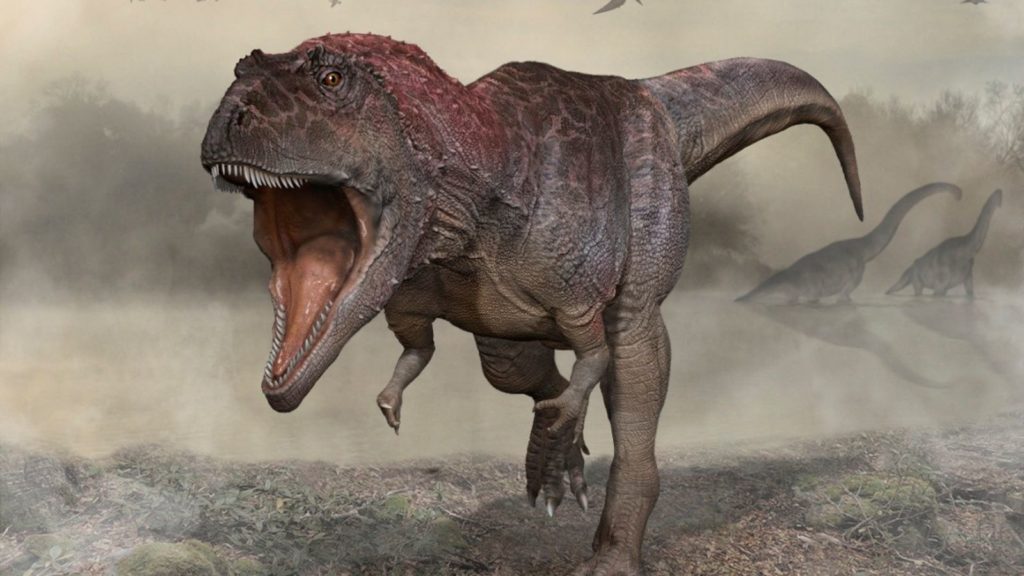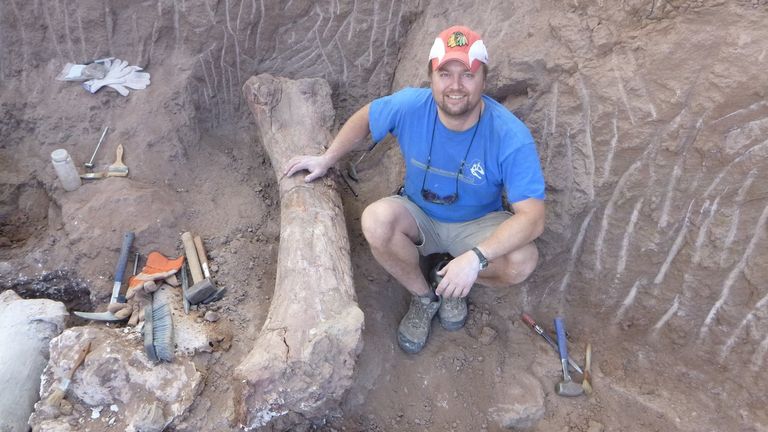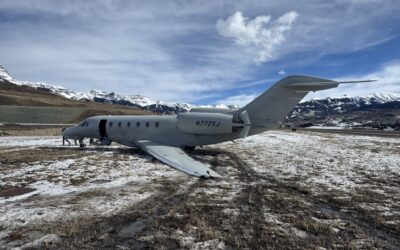T-rex may have used small arms for mating, discovery of Meraxes gigas dinosaur suggests | World News

The discovery of a dinosaur related to Tyrannosaurus rex has led researchers to speculate their tiny arms were used during mating.
Meraxes gigas was unearthed in Argentina and is thought to have weighed around four tons, a study says.
Its discovery helped scientists understand some of the uses short-armed theropods may have had for their diminutive forelimbs.
Juan Canale, the lead author of the study, said: “I’m convinced that those proportionally tiny arms had some sort of function.”
Mr Canale, of the Argentine research agency CONICET, said that although the arms were too short for hunting, “I’m inclined to think that they were used in other kinds of activities, like holding the female during mating or help in raising the body from a prone position.”
Meraxes lived around 90 million years ago in the Cretaceous period.
Despite being around 12 metres long, the creature had front limbs only 60cm in length.
Meraxes gigas’ skull
Meraxes is part of the theropod group of dinosaurs, which walked on two legs, in the carcharodontosaurus – or shark-toothed – family.
Tyrannosaurus rex was another theropod, part of the related tyrannosaurus group.
Like its distant cousin, Meraxes had a sizeable head – around 130cm long – which was “covered with bumps, ridges and furrows, giving it a gnarly appearance like a medieval gargoyle”, according to the palaeontologist Pete Makovicky.
Previous discoveries of theropods with little arms have not been as complete as Meraxes.
Read more:
76 million-year-old meat-eating dinosaur skeleton to be auctioned
The secret to the T Rex’s bone-crushing bite
Biggest-ever land-based predator dinosaur found on the Isle of Wight
Scientists discover dinosaur that may have invented ‘dress to impress’
Scientists have long speculated why tyrannosaurus, carcharodontosaurus and a third group known as abelisaurus had such small arms.
All three had big heads, suggesting a reliance on this for taking down prey.
Researchers estimate that Meraxes’ arms were stout and muscular despite their size.

Mr Makovicky, of the University of Minnesota, said: “Despite their powerful appearance, it’s hard to imagine they were used much as they barely extend beyond the body and could not have reached the huge mouth.”
Some theropods, like Spinosaurus, Therizinosaurus and Deinocheirus had longer front limbs, but they seemed to have had different diets than the short-armed ones.
The study was published in the journal Current Biology.
Recent Posts
- Bombardier to build $100M manufacturing facility in Canada
- John Travolta, Morgan Freeman and Kenny G. to headline Living Legends of Aviation
- Merencanakan Acara Mewah? Berikut Cara Hadirkan Faktor “wow” yang Tak Terduga.
- Stralis Aircraft’s European launch customer, EVIA AERO, expands its partnership for hydrogen-electric aircraft
- NTSB states cracked part in crashed UPS Douglas MD-11 was identified in 2011







Recent Comments